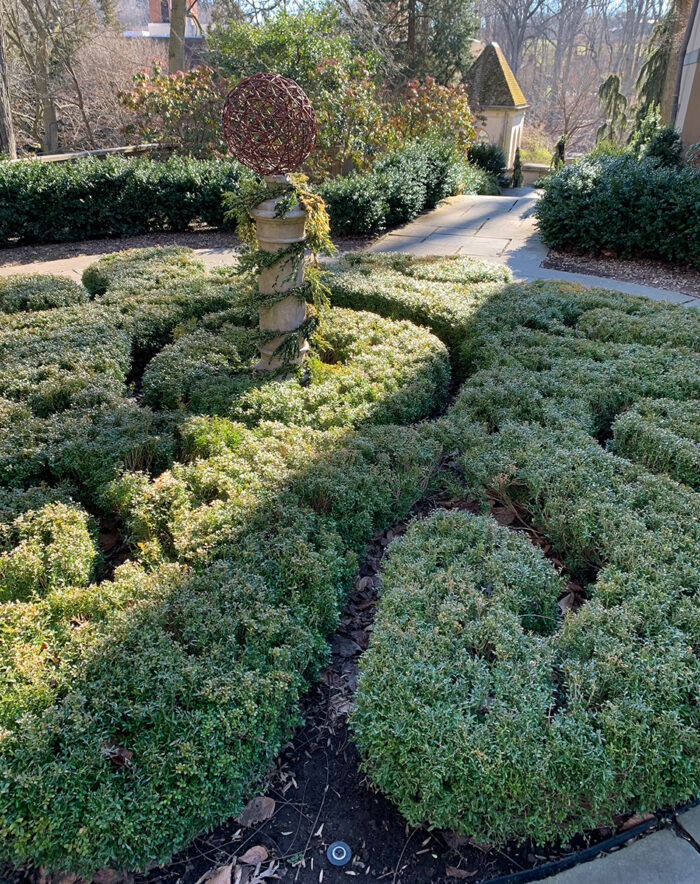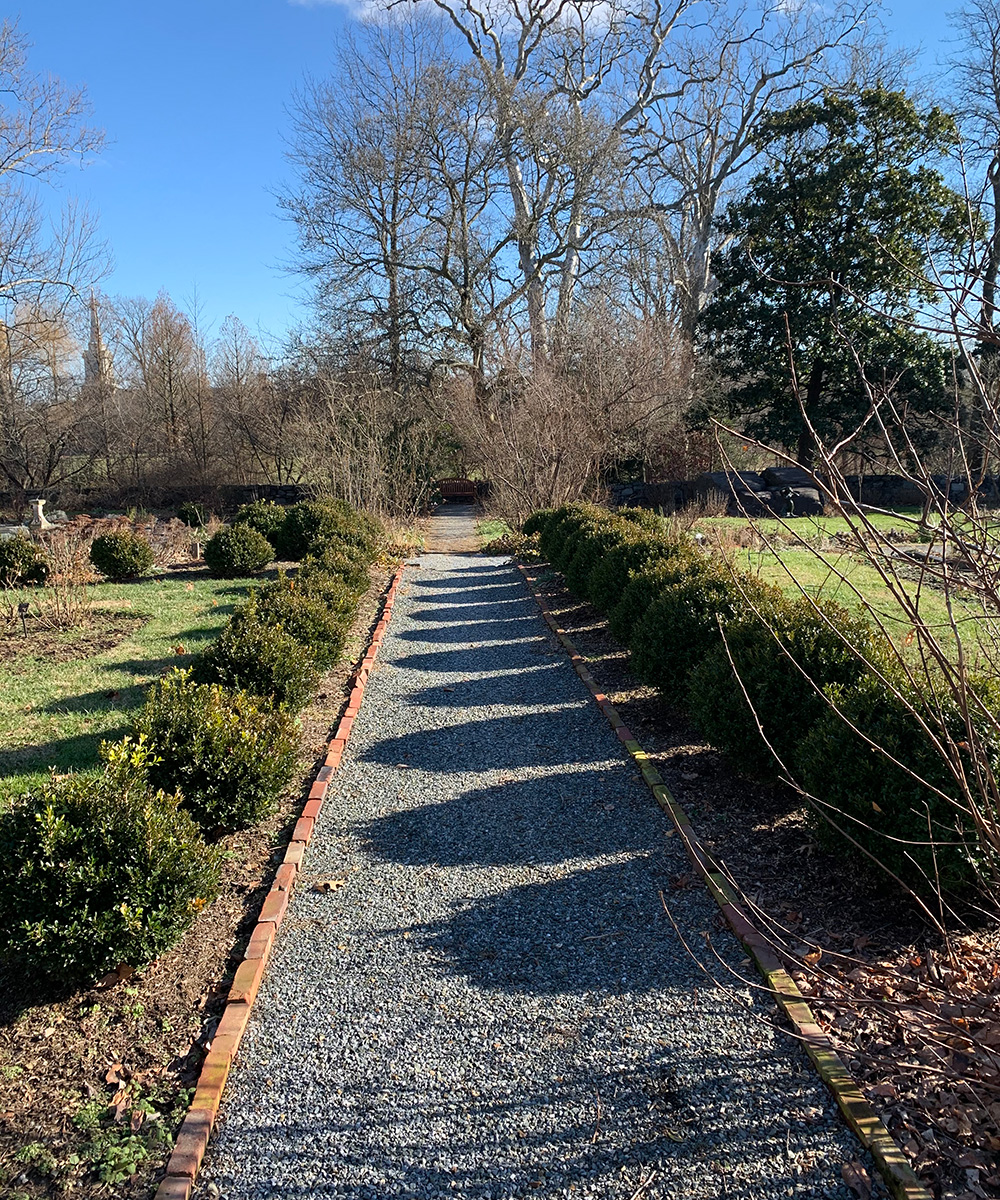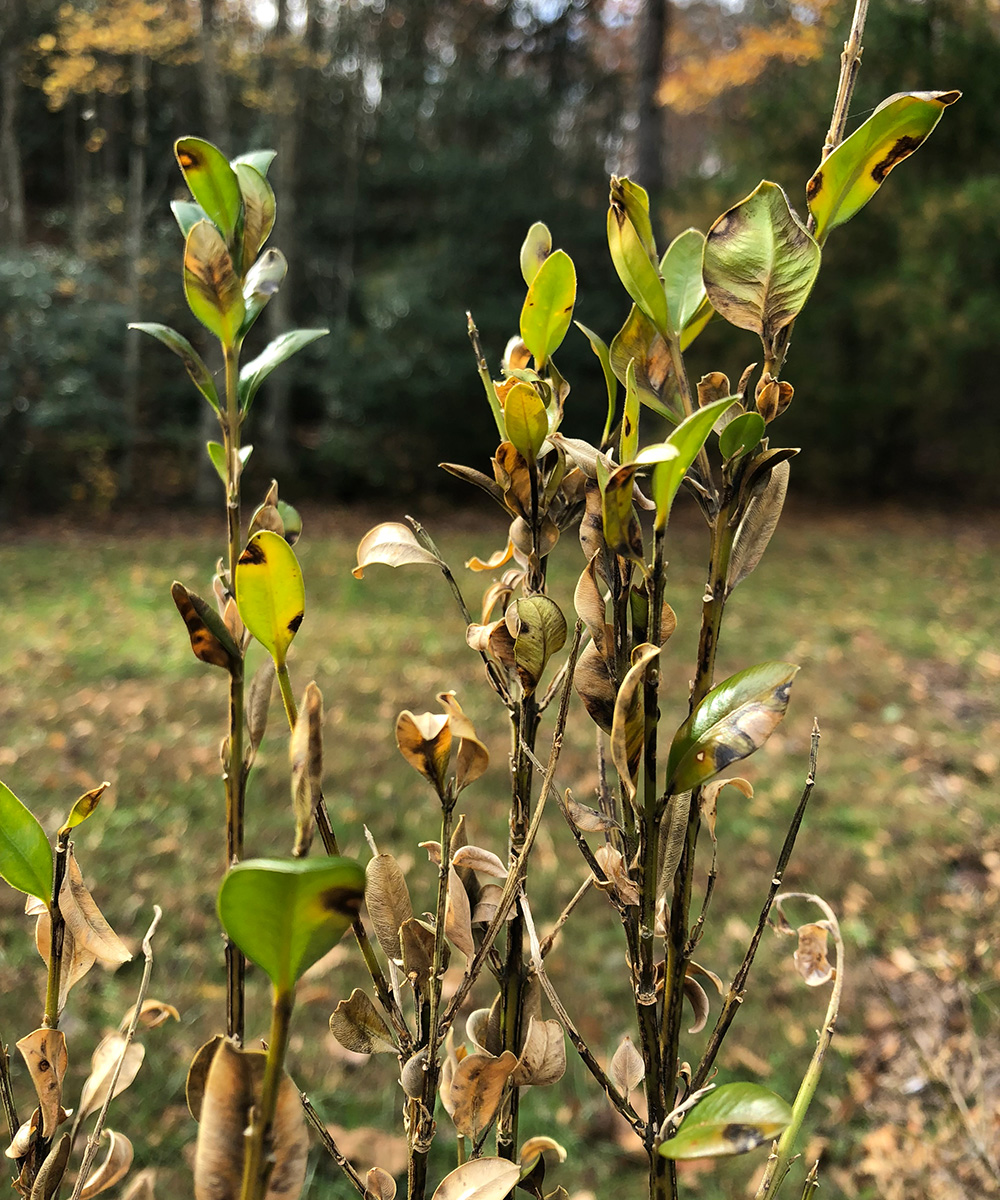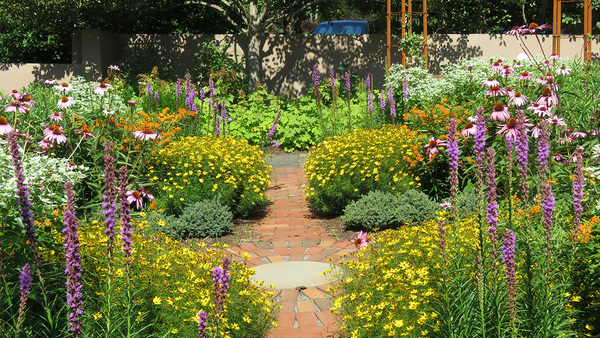
Many gardeners here in the Mid-Atlantic are straying farther and farther away from boxwoods (Buxus spp. and cvs., Zones 4–9). Quite frankly, boxwoods have gotten a bad rap. The biggest reason for their declining reputation is the dreadful boxwood blight (Cylindrocladium buxicola). However, after talking to Bennett Saunders of Saunders Brothers Nurseries in Piney River, Virginia, I have hope for growing beautiful, manageable boxwoods in this region. Saunders is confident that boxwoods will make a comeback in the next few years due to gardeners learning about best-management practices for the disease and new blight-resistant selections becoming available in the trade.
Boxwood blight is a huge problem but fairly new to us in the Mid-Atlantic. We have to consider the problems that have been plaguing gardeners for hundreds of years, such as stem blight, root rot, and pests like leaf miner and boxwood psyllids. In order to prevent these problems, Saunders asserts that best-management practices are by far the most effective way to prevent problems, even boxwood blight. These practices include plant selection, site selection, proper planting technique, and proper maintenance.

Plant selection
Saunders’s nursery is heavily involved in researching new boxwood varieties. While looking for and growing new boxwoods, the three most important criteria the nursery looks for are (1) resistance to pests such as leaf miner, (2) resistance to boxwood blight, and (3) the “wow” factor of the plant’s appearance from afar. Saunders’s three favorite boxwoods are ‘Little Missy’ boxwood (B. microphylla, Zones 5–9), Independence® boxwood (B. ‘SB 108’, Zones 5b–9), and Freedom® boxwood (B. ‘SB 300’, Zones 5–8). Listed in order of growth rate, all three are known to be more resistant to pests and diseases and to look great in the garden. Other strong selections are two Korean boxwoods: ‘Nana’ (Buxus sinica var. insularis ‘Nana’, Zones 4–9) and ‘Franklin’s Gem’ (Buxus sinica syn. B. microphylla ‘Franklin’s Gem’, Zones 5–8). Both boxwoods need little pruning and stay small and compact.
Saunders absolutely recommends against planting English boxwood (Buxus sempervirens ‘Suffruticosa’, Zones 5–8). He believes this plant is a magnet for disease, specifically boxwood blight. He recommends removing it from the garden if you have it, as there are so many better options available.
Site selection
Next, think about where you would like to grow your boxwoods. All boxwoods do well in shade, but not all of them tolerate full sun. ‘Nana’ Korean boxwood is one of the varieties that will not thrive in full sun and thus become stressed and susceptible to pests and diseases. So find the boxwood that will best tolerate your conditions. No boxwoods like wet soil, so find a well-drained area away from downspouts or low-lying spots.
Also, boxwoods require excellent air circulation. They perform best in an open area where the air circulates the most. Next to a building or under a densely planted area with trees is not an ideal condition for boxwoods.

Proper planting technique
When you are ready to plant your boxwood, be sure to plant properly. Testing the soil first is ideal. Boxwoods grow best at a neutral pH (6.5 to 7). Before planting, amend the soil as needed for additional nutrients and drainage. When digging the hole for a boxwood, make sure the root ball will sit 1 to 2 inches above the soil level, leaving the base of the stem clear of soil.
Maintenance
Finally, when maintaining your boxwood, make sure the plant is well watered and does not become overly dry. Fertilize on an as-needed basis according to soil tests. Generally, boxwoods do not need a lot of fertilizer. Also, be sure to mulch regularly, as mulch will regulate soil temperatures and help reduce spores of the fungus that causes boxwood blight.
Boxwoods are a plant that gardeners love to shape and prune. However, be sure to use practices that will reduce the spread of disease. Clean your pruners before and after pruning with a diluted bleach solution or isopropyl alcohol. It is best to clean before and after pruning each plant, if possible. Prune when diseases are more dormant, such as in late winter or early spring.
If Mid-Atlantic gardeners follow a few guidelines when selecting, planting, and maintaining boxwoods, they will not encounter as many problems as they are led to expect. Best-management practices along with more blight-resistant selections emerging on the market will keep diseases and pests at bay, and gardeners will be less wary about adding boxwoods to their gardens in coming years.
—Michele Christiano has worked in public gardens for most of her career. She currently works as an estate gardener maintaining a private Piet Oudolf garden.
Fine Gardening Recommended Products

Black and Decker 22-inch Cordless Hedge Trimmer
Fine Gardening receives a commission for items purchased through links on this site, including Amazon Associates and other affiliate advertising programs.
- 38 x 7 x 7 inches
- 6.9 pounds
- 1 Lithium Ion battery required (included)

Pruning Simplified: A Step-by-Step Guide to 50 Popular Trees and Shrubs
Fine Gardening receives a commission for items purchased through links on this site, including Amazon Associates and other affiliate advertising programs.

DeWalt Variable-Speed Cordless Reciprocating Saw
Fine Gardening receives a commission for items purchased through links on this site, including Amazon Associates and other affiliate advertising programs.
- 18.31 x 6.13 x 4 inches
- 1-1/8-inch stroke length
- Variable speed trigger with 0-3000 spm



















Comments
Log in or create an account to post a comment.
Sign up Log in